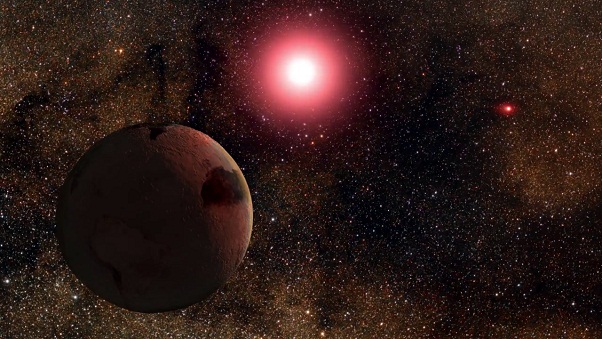| Online: | |
| Visits: | |
| Stories: |

| Story Views | |
| Now: | |
| Last Hour: | |
| Last 24 Hours: | |
| Total: | |
Astronomers find Star with three Super-Earths “just” 21 Light Years from Earth (+Video)
Astronomers said Thursday they had found a planetary system with three super-Earths orbiting a bright, dwarf star—one of them likely a volcanic world of molten rock.
The four-planet system had been hiding out in the M-shaped, northern hemisphere constellation Cassiopeia, “just” 21 light years from Earth, a team reported in the journal Astronomy & Astrophysics.
It comprises four planets—one giant and three super-Earths orbiting a star dubbed HD219134.
Super-Earths have a mass higher than Earth’s but are lighter than gas giants like Neptune, Saturn or Jupiter. They can be made of gas, rock, or both.
The planet with the shortest orbit, HD219134b, zips around every three days, and has now been observed transiting across the face of its star as seen from the vantage point of Earth.
PHYS/ORG
Read more at: http://phys.org/news/2015-07-astronomers-star-super-earths.html#jCp

Image credit: ESA



